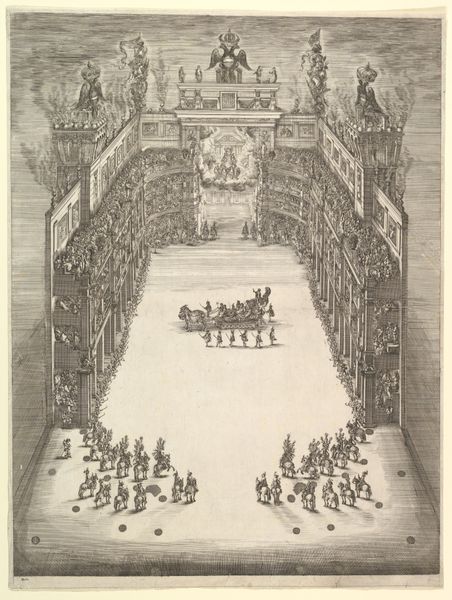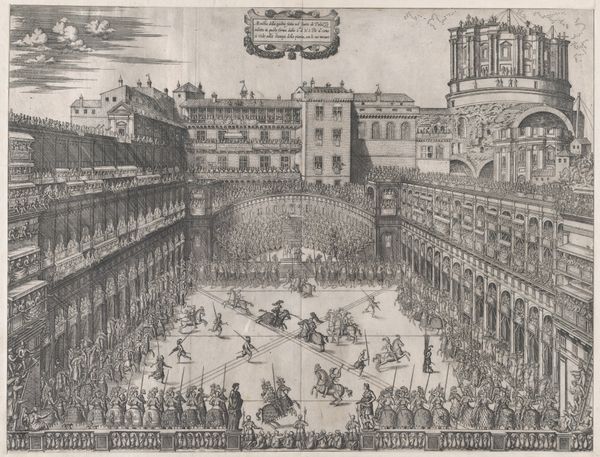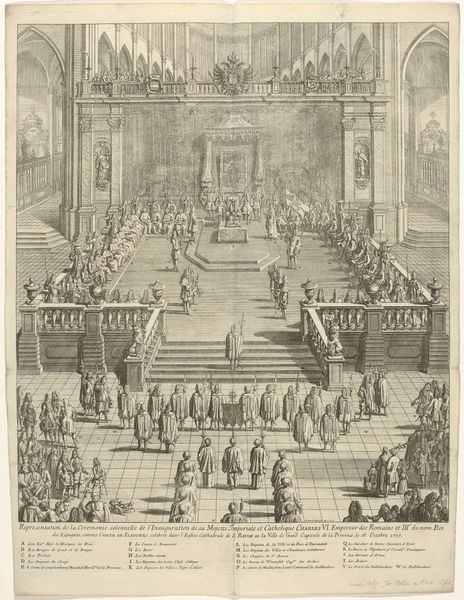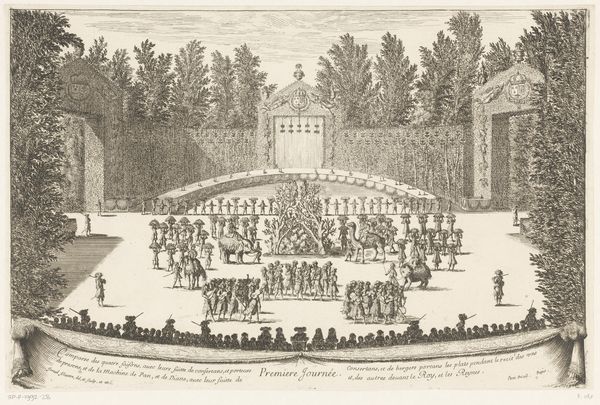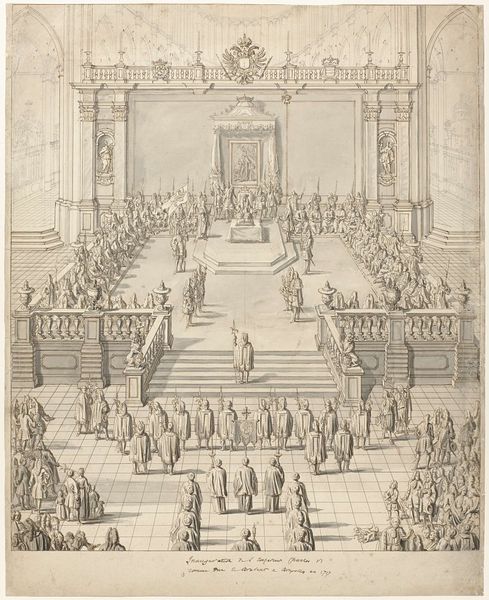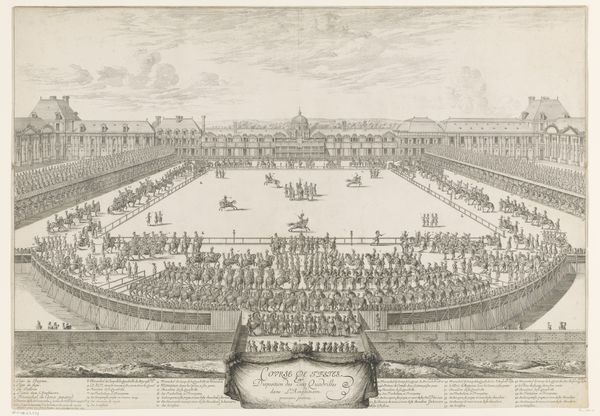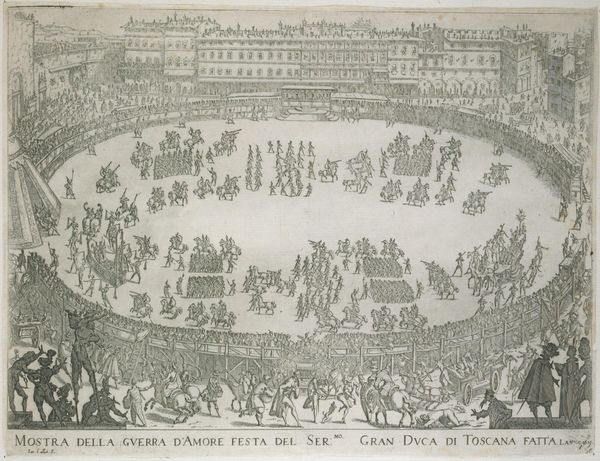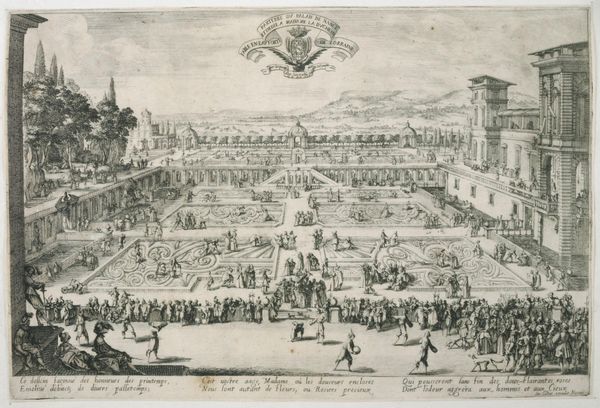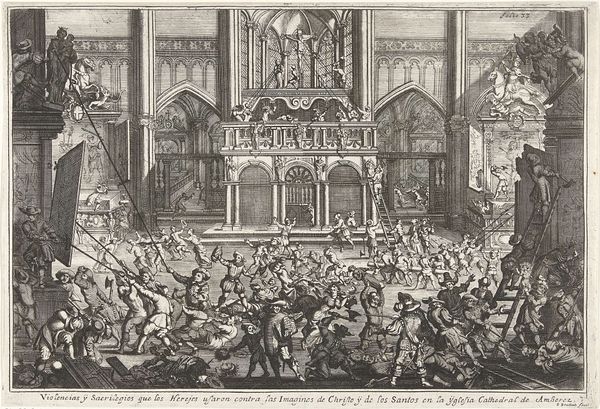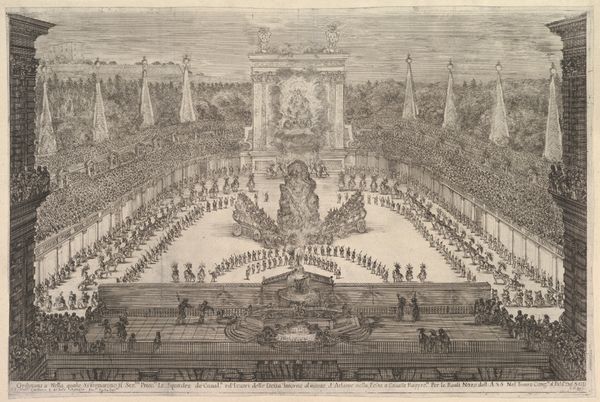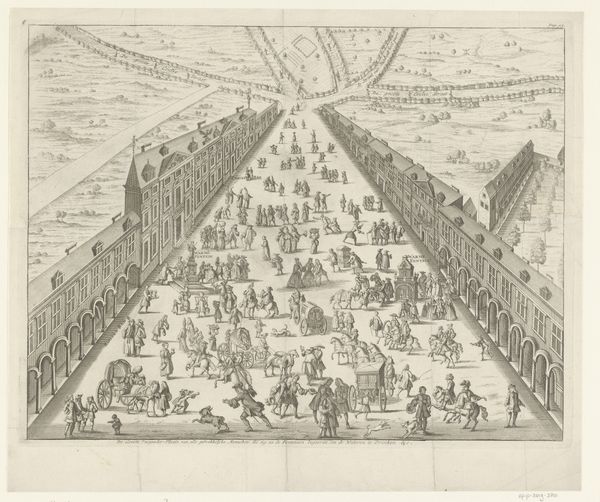
Speculum Romanae Magnificentiae: Marriage of Annibale Altemps and Ortensia Borromeo, Rome, March 5, 1565 1565
0:00
0:00
drawing, print, engraving, architecture
#
drawing
# print
#
perspective
#
11_renaissance
#
geometric
#
soldier
#
line
#
cityscape
#
history-painting
#
italian-renaissance
#
engraving
#
architecture
Dimensions: sheet: 14 3/4 x 20 1/4 in. (37.5 x 51.5 cm)
Copyright: Public Domain
Editor: This is a print by Étienne Dupérac, titled *Speculum Romanae Magnificentiae: Marriage of Annibale Altemps and Ortensia Borromeo, Rome, March 5, 1565,* made in 1565. The detail is incredible! It looks like a snapshot of a massive celebration, rendered with such precise lines. I’m curious, as someone immersed in the visual language of history, what do you see in this piece? Curator: This isn’t just a record of a wedding; it’s a deliberate construction of power and status, isn’t it? The very perspective, forced and exaggerated, makes the Altemps-Borromeo union monumental. Think about the architecture – cold, rational. What emotional feeling do these geometric elements project onto the overall impression, do you think? Editor: The symmetry and order definitely communicate power, like a stage set for a demonstration of wealth. The eye is drawn to the center, emphasizing the performance more than the people involved. Curator: Exactly. Now, consider the specific symbolic language embedded. We have militaristic imagery– lines of soldiers and knights clashing in joust. How might these classical militaristic figures reflect broader cultural currents? Consider its intended 16th century audience and their common social experiences. Editor: I see. The soldiers, the formations... perhaps they reflect not just military strength, but the controlled social order the families wished to project. And I’m just realizing, marriage itself was a strategic maneuver, less about love, more about consolidating influence. Curator: Precisely! It reminds us how imagery can solidify lasting beliefs about a ruling class. Even seemingly innocuous celebratory art can carry weight with lasting impacts over the collective cultural memory of this era. The event’s details now take on layers of intention beyond just documentation, don’t they? Editor: Absolutely. It makes me reconsider how art commemorates, celebrates, and consciously crafts meaning. It is power expressed visually! Curator: Yes, indeed. This is how echoes of that power continues to ripple through time. It makes you realize how a print of a party has cultural consequence.
Comments
No comments
Be the first to comment and join the conversation on the ultimate creative platform.
